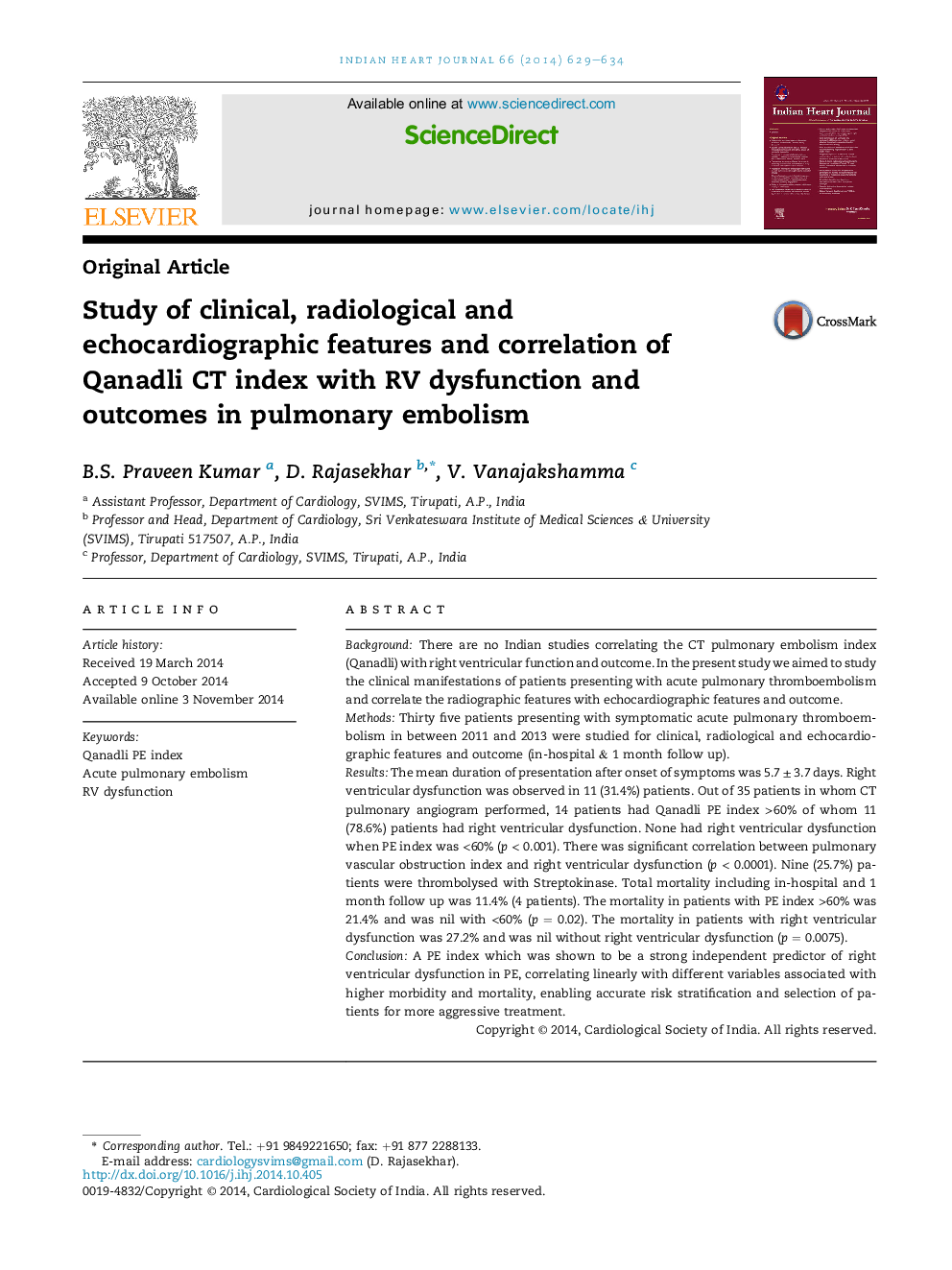| Article ID | Journal | Published Year | Pages | File Type |
|---|---|---|---|---|
| 5962014 | Indian Heart Journal | 2014 | 6 Pages |
BackgroundThere are no Indian studies correlating the CT pulmonary embolism index (Qanadli) with right ventricular function and outcome. In the present study we aimed to study the clinical manifestations of patients presenting with acute pulmonary thromboembolism and correlate the radiographic features with echocardiographic features and outcome.MethodsThirty five patients presenting with symptomatic acute pulmonary thromboembolism in between 2011 and 2013 were studied for clinical, radiological and echocardiographic features and outcome (in-hospital & 1 month follow up).ResultsThe mean duration of presentation after onset of symptoms was 5.7 ± 3.7 days. Right ventricular dysfunction was observed in 11 (31.4%) patients. Out of 35 patients in whom CT pulmonary angiogram performed, 14 patients had Qanadli PE index >60% of whom 11 (78.6%) patients had right ventricular dysfunction. None had right ventricular dysfunction when PE index was <60% (p < 0.001). There was significant correlation between pulmonary vascular obstruction index and right ventricular dysfunction (p < 0.0001). Nine (25.7%) patients were thrombolysed with Streptokinase. Total mortality including in-hospital and 1 month follow up was 11.4% (4 patients). The mortality in patients with PE index >60% was 21.4% and was nil with <60% (p = 0.02). The mortality in patients with right ventricular dysfunction was 27.2% and was nil without right ventricular dysfunction (p = 0.0075).ConclusionA PE index which was shown to be a strong independent predictor of right ventricular dysfunction in PE, correlating linearly with different variables associated with higher morbidity and mortality, enabling accurate risk stratification and selection of patients for more aggressive treatment.
